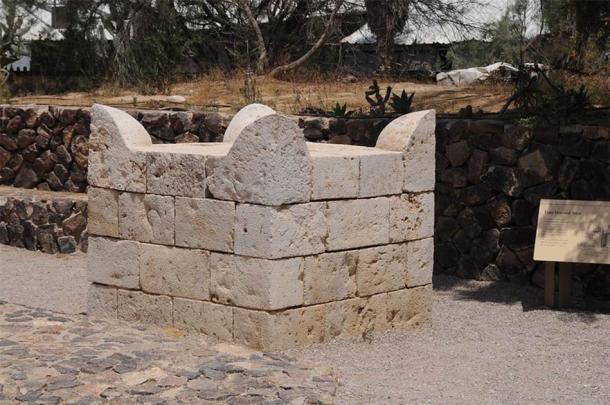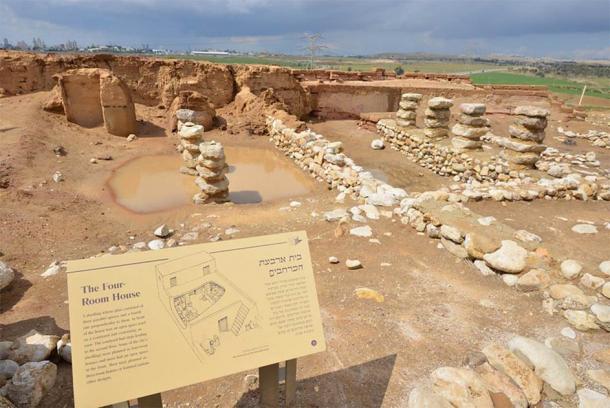
Israel’s Rare Artifacts from the Ancient Biblical City of Be’er Sheva
Israel has many fascinating and important archaeological sites, and many have biblical associations. One of the most popular is Tel Be’er Sheva archaeological park. This holds the remains of a city often mentioned in the Bible and was once an important administrative and military center. The park’s relics date from the Israelite period to the Roman era, and such is its importance that is has been recognized by UNESCO as one of the three tels (mounds) that contain substantial remains of cities with biblical connections.
The Rich History of Be’er Sheva Israel
The area was first settled in the 4 th century BC, in the so-called Copper Age. It was possibly destroyed or abandoned several times but later became an Israelite stronghold. It is frequently mentioned in the Bible and often regarded as a border town called Beersheba. According to the Book of Genesis, Abraham and his family spent time here, and it was also here that Isaac heard the Word of God.
The settlement prospered because of its well, one of the deepest in Israel, which the Bible claims was first dug by Abraham and later Jacob. Be’er Sheva was part of the Kingdom of Israel and later the Kingdom of Judah. Based on the city’s design it is thought that the inhabitants were also responsible for the defense of the city. However, in the early 8 th century BC it was destroyed by the Assyrians who had the most feared army in the ancient world.

The rare horned altar found at Tel Be’er Sheva, the first ever unearthed in Israel (CC BY-NC-ND 2.0)
The inhabitants of the city were deported to remote areas of the Assyrian Empire. Some archaeologists believe that it was also later sacked by the Babylonians. Although it was used by the Persians as a fortress, the town itself remained largely depopulated.
The town revived during the Seleucid era and a Greek temple was built within its walls. Under the Jewish client king Herod, also known as Herod the Great, the urban settlement prospered. It flourished under first the Roman and then the Byzantine Empires, but ultimately went into decline and was abandoned.
In the 8 th century AD, the location was an Arab fortress and thousands of years later, during WWI, the Ottoman army built a fortress at Tel Be’er Sheva. This too was abandoned and remained so until it was first excavated by archaeologists in 1975. Today it is an archaeological park that was restored in 2003.
The Incredible Sights at Tel Be’er Sheva Archaeological Park
The city is protected all around with casemate walls – two parallel walls divide by partitions into rooms. The entrance to the park is a modern structure and a path leads visitors to the inner gate and towards the city square. At the center of the site is an observation tower where visitors can view the remains and the surrounding countryside.
Beyond the square are the ruins of the governor’s palace which sits adjacent to the remains of a Hellenistic temple, with remains of a street that run parallel to the walls. An ancient storehouse dates to the Israelite Kingdom, while the ancient well may date back to Biblical times and could possibly have been dug on the orders of Abraham or Isaac. Walls of a house, with four rooms, date back over 2500 years. A Roman fortress was strategically built on the hill which is now within the site and its outline is still visible.
- Riders On The Storm: Ancient Clay Horse Heads Emerge After Heavy Rain In Israel
- Resurrecting the Ancient Israelites From the Valley of Dry Bones
- Boutique Wine for Byzantines: 1,600-year-old Wine Press Discovered in the Negev Desert

The Four-roomed house at Tel Be’er Sheva (CC BY-ND-ND 2.0)
Archaeologists found a host of treasures at Tel Be’er Sheva. These include a rare horned altar which is mentioned in the Bible. The real artifact is now in the Israel Museum, while the replica is on display at Tel Be’er Sheva. It is also possible to visit the well-preserved ancient cisterns, accessed by stone stairs. The exit from the site is via the old water supply system.
Visiting Tel Be’er Sheva in Israel
The site is located in the Negev Desert and not far from the modern city of Be’er Sheva. Visitors are reminded that temperatures can soar in summer and appropriate clothing is advised to prevent sunburn.
The site is located near a highway and is easily accessible. Private visits can be undertaken but tours are also available and so too are tour guides. Tickets to Tel Be’er Sheva can be obtained at the site.
Top image: Ruins of the biblical Beersheba, Tel Be'er Sheva, Israel Source: lic0001 / Adobe Stock
By Ed Whelan
















Comments
First settled in the 4th century Bc, but destroyed by Assirians 400 years earlier??? Timeline must be off somewhere.